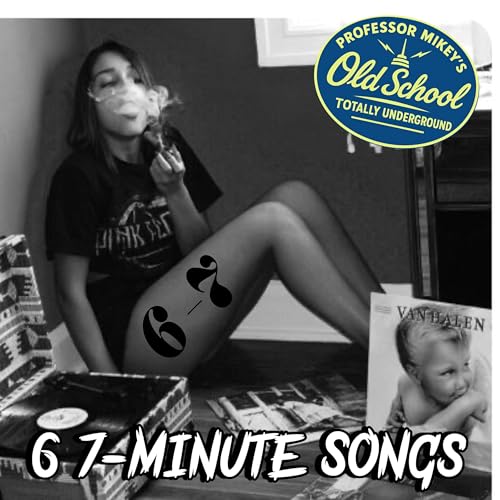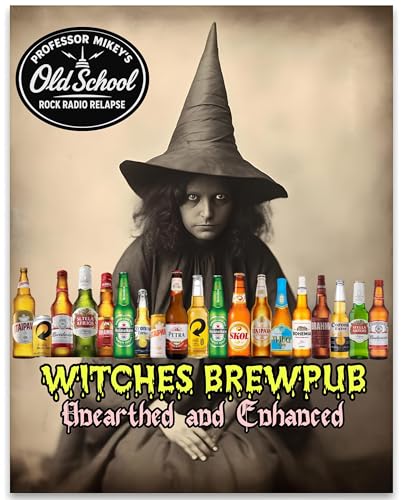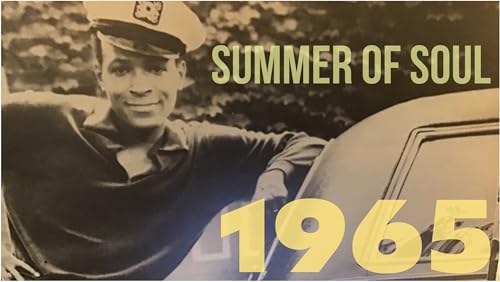Hey Old Schoolers. Professor Mikey here with another attempt to bring the past back to where it belongs. In our hearts and minds. If I were building a time machine school bus, I’d make sure it had a great sound system before it had anything else. Especially a search engine. Ha ha.
Old School loves the underground years, but in ‘65 a lot of things were getting figured out. The British Invasion was full on and the USA had surrendered to the long hair, the mersey beat,mini skirts and swinging London.
But they all share something in common besides the paisley pants, and swinging London. All these groups and many more were enchanted and influenced by the stone cold grooves blasting out from Black America. The Stones loved the Muddy Waters of the Chicago Blues. John Paul George and Ringo stopped in the name of love to groove on those Motown harmonies. Eric Burdon lived in the House of the Rising Sun.
So for this show we are going to the songs that were powering American soul trains and soul radio. Putting them together sounds like a street symphony of wisdom and groove, inspired by the restless need to be free and totally expressive through a music that was ascending to new heights.
If you had the opportunity to find a late night soul station in the summer of ‘65 this is some of what you might have heard. Put on your high heel sneakers, don’t be too proud to beg, sugar pie honey bunch. Old School is turning it over for episode 86.
It’s the Soul Summer of ‘65, in the midnight hour, in any hour. As a culture, Papa’s got a brand new bag.
Thanks for reading Professor Mikey's OLD SCHOOL! This post is public so feel free to share it.
Professor Mikey, about to wrap up episode 86 of the Old School, “1965 Summer of Soul.” The obvious problem, this old jukebox has swallowed up all my dimes, and there are still lots of great songs we haven’t heard yet. So lets do this. Lets make this Volume 1, and we will come back at you with a Volume 2 for our next episode. The music is already there, including more Otis Redding, more Supremes, more Marvin Gaye, plus some lesser known artists like Gene Chandler, the Marvelows, Mel Carter, Lee Dorsey, and even a 60s comeback from Little Richard. 1965 Summer of Soul Volume 2, coming soon to Substack or a podcast player near you.
If you like the show, forward it to a friend. Professor Mikey’s Old School is produced for educational purposes, and the chance to get your groove on. The music we hear is either in the public domain, cleared by the podcast providers, encouraged by the artists and their families, or is used within the guidelines of Section 107 of the copyright act of 1976, wherein the definition of “fair use” becomes especially muddy. We prefer Muddy Waters.
A free subscription to my newsletter takes a second and its the fastest, easiest way to get the latest episode, plus roam the stacks of what has come before. Do that at professormikey.substack.com. Come see about me.
Thanks for listening, rock on with your bad self, and keep the music coming. Stay safe, stay cool, and keep it Old School.
And be sure to have a good answer when you they ask you “What were you known for?”
1965 Summer of Soul
Midnight Hour Wilson Pickett
Papa’s Got a Brand New Bag Pt 1, 2, 3 James Brown
The Jerk The Capitols
Can’t Help Myself (Sugar Pie Honey Bunch) The Four Tops
Shotgun Jr. Walker and the All-Stars
Boomerang Jr. Walker and the All-Stars
The Clapping Song Shirley Ellis
Iko Iko The Dixie Cups
Do I Love You Billy Stewart
See Saw Don Covay
Uptight (Everything’s Alright) Stevie Wonder
All or Nothing Patti LaBelle and the Bluebelles
Yes I’m Ready Barbara Mason
Tonight’s the Night Solomon Burke
I’ve Been Loving You To Long Otis Redding
The Birds and the Bees Jewel Akens
Ain’t That Peculiar Marvin Gaye
Stop! In the Name of Love The Supremes
This is a public episode. If you'd like to discuss this with other subscribers or get access to bonus episodes, visit professormikey.substack.com/subscribe
 Dec 16 20251 hora
Dec 16 20251 hora Dec 5 202559 minutos
Dec 5 202559 minutos Nov 18 202558 minutos
Nov 18 202558 minutos Oct 28 202555 minutos
Oct 28 202555 minutos Oct 21 202559 minutos
Oct 21 202559 minutos Sep 21 20251 hora e 1 minuto
Sep 21 20251 hora e 1 minuto Aug 19 20251 hora e 14 minutos
Aug 19 20251 hora e 14 minutos Aug 1 20251 hora e 3 minutos
Aug 1 20251 hora e 3 minutos

